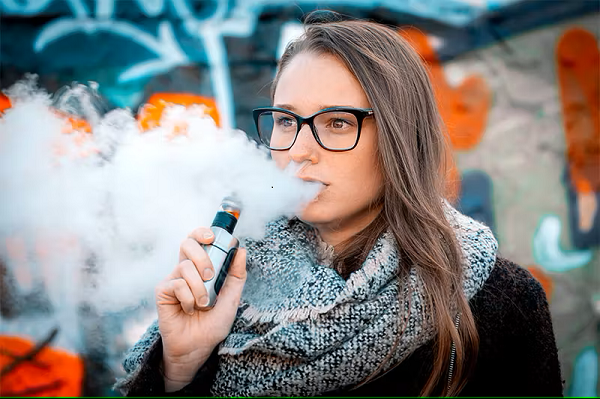| Section | Link to Section |
|---|---|
| Exquisite Detail | Exquisite Detail And Wide-Ranging use |
| Cigarettes & Vapes | Cigarettes And Vapes Are Alternatives. |
The National Institutes of Health (NIH) and the FDA have financed a new study demonstrating that banning flavors in e-cigarettes increases cigarette sales while decreasing e-vaporate sales. According to the study's authors, 15 cigarettes are substituted for each 0.7 mL vape pod that isn't sold due to taste limits.
Sales of non-tobacco (and occasionally menthol) vape flavors are prohibited by legislation in seven US states as well as almost 400 municipal governments. One of the main objectives of tobacco control groups and Bloomberg Philanthropies, its largest donor, has been the enactment of such regulations. Furthermore, the FDA Center for Tobacco Goods has said it is unlikely to ever approve flavored vaping goods, having denied over a million premarket tobacco applications (PMTAs) for flavored e-liquids and prefilled vapes.
According to recent research, these rules incentivize vapers of all ages to switch from flavored vapes to cigarettes, which is detrimental to both public and individual health.
Researchers Abigail Friedman and Alyssa Crippen (Yale), Alex Liber (Georgetown), and Michael Pesko (University of Missouri) have presented their findings in a preliminary manuscript that has not yet undergone peer review.
Exquisite Detail And Wide-Ranging use
The authors started by compiling a comprehensive list of all state-by-state flavored vape laws and creating a database that was strong enough to account for retailer exemptions, concurrent cigarette and cigar flavor rules, enactment and enforcement dates, and the flavors that each policy covered. Next, using comparable mass-market retail shop sales data from Information Resources Incorporated (IRI), they cross-referenced the policy data. (Online and vape store sales are not included in the IRI data.)
The consequences of measures enacted between January 7, 2018, and March 26, 2023, could be examined by the researchers. In that span, 279 municipal and 15 state laws and regulations went into force, and the percentage of Americans impacted by taste prohibitions or limits increased from 1.3 to 38.0 percent. The sales data allows the authors to avoid confusion caused by both the 2020 COVID-19 pandemic and the 2019 "EVALI" lung injury outbreak because it starts in 2018 and goes through 2023. As a result, the research's degree of completeness and detail is unlikely to be contested.
Here are the researchers' top five findings, paraphrased:
- Vape sales decline and cigarette sales increase when a greater percentage of state residents is subject to flavor-restrictive policies. (In other words, a flavor ban in any given city is less effective when surrounding localities have not also banned flavors)
- The relationships between restrictive flavor policies and vape/cigarette sales effects become more significant over time
- Non-menthol cigarettes account for 71 percent of the increased cigarette sales associated with flavored vape restrictions, which the authors say “indicates that the observed substitution response to ENDS flavor policies cannot be attributed to menthol cigarettes’ availability nor fully counteracted by menthol cigarette sales prohibitions”
- The relationship between vape flavor restrictions and increased cigarette sales is consistent “across cigarette product age profiles, including for brands disproportionately used by underage youth”
- Both outright flavor bans and laws restricting flavored vapes to certain (usually adult-only) retail stores reduce vape sales and increase cigarette sales once they’ve been in effect for a year or more
Advocates for harm reduction and vaping anticipated these results and alerted politicians about them throughout the policy debate. People prefer a wide range of tastes in their vape devices, and if those flavors aren't offered, they'll either keep smoking or start.
Cigarettes And Vapes Are Alternatives.
Previous studies by co-authors Michael Pesko and Abigail Friedman have demonstrated that different limits on vaping goods led to increases in cigarette sales or smoking rates. According to a 2015 Friedman study, age limitations on the sale of e-cigarettes led to an increase in the number of minors who smoke. In 2021, Friedman linked San Francisco's 2018 flavored vape ban to a rise in teen smoking relative to areas without such restrictions. Later that year, Friedman, Pesko, and a number of other co-authors worked together to demonstrate how rising vape taxes correlated with rising cigarette sales rates and vice versa.
These findings, along with additional research, suggest that vapes and cigarettes are cost-effective alternatives. Policies that favor the usage and sales of one product negatively impact the use and sales of the other. Flavor limits are another policy option that leads people to pick cigarettes over considerably less dangerous vapes, according to the current study.
The authors state that their findings "align with results from 16 of 18 other studies assessing cigarette use following adoptions of minimum legal sales age laws for ENDS, ENDS tax rate increases, and advertising restrictions." These findings are consistent with flavored ENDS policies encouraging substitution from ENDS towards combustible cigarettes. Stated differently, it seems that measures that increase the cost, restrict accessibility, or make ENDS less enticing encourage people to switch to cigarettes.






